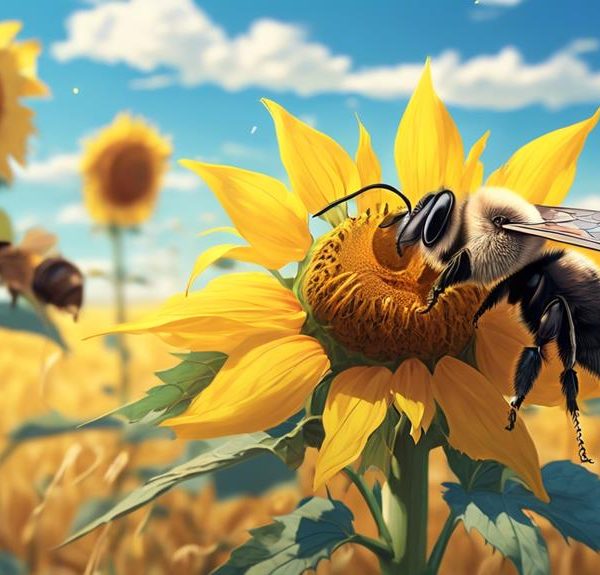P'eer into Nevada's ecosystem to discover if the industrious mason bee, a master pollinator, is buzzing amidst its arid landscapes.
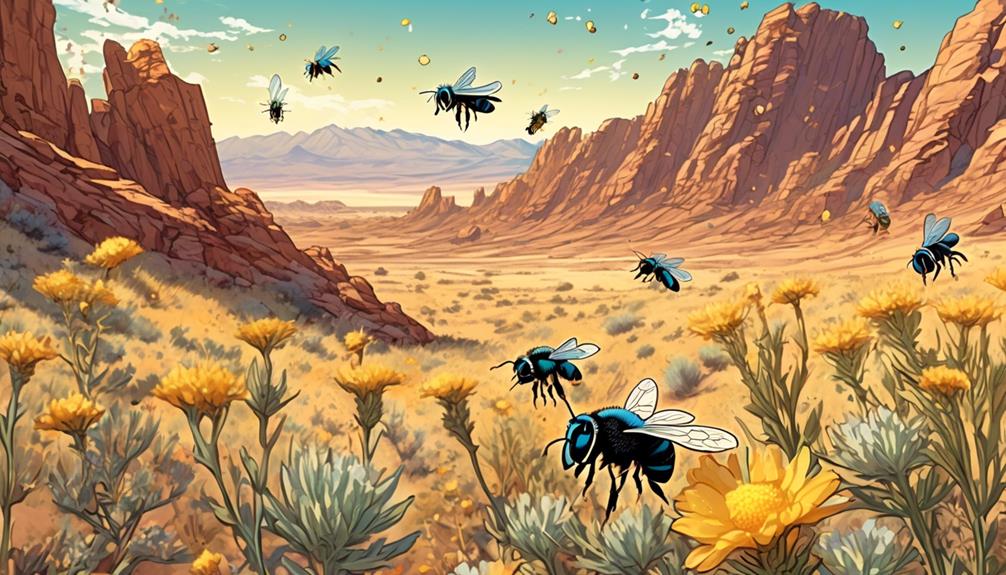
Are There Mason Bees in Nevada?
In the vast, arid landscapes of Nevada, where cacti stand tall against the backdrop of endless sand, you might be surprised to find a buzzing little world of bees.
You've probably heard a lot about honeybees and bumblebees, but what about mason bees? These solitary creatures, unlike their social bee counterparts, are known for their exceptional pollinating skills.
The question that arises then, is whether these industrious critters have made Nevada their home. The answer may not only alter your perception of Nevada's ecosystem but could also have significant implications on the state's plant diversity and agricultural productivity.
Let's embark on this exploration together.
Key Takeaways
- Mason Bees are solitary creatures that create individual nests in small cavities.
- Mason Bees are found in various environments in the United States, including Nevada.
- Mason Bees are exceptional pollinators and contribute to the pollination of numerous native plant species in Nevada.
- Habitat loss and pesticide use pose threats to Mason Bees in Nevada.
Understanding Mason Bees
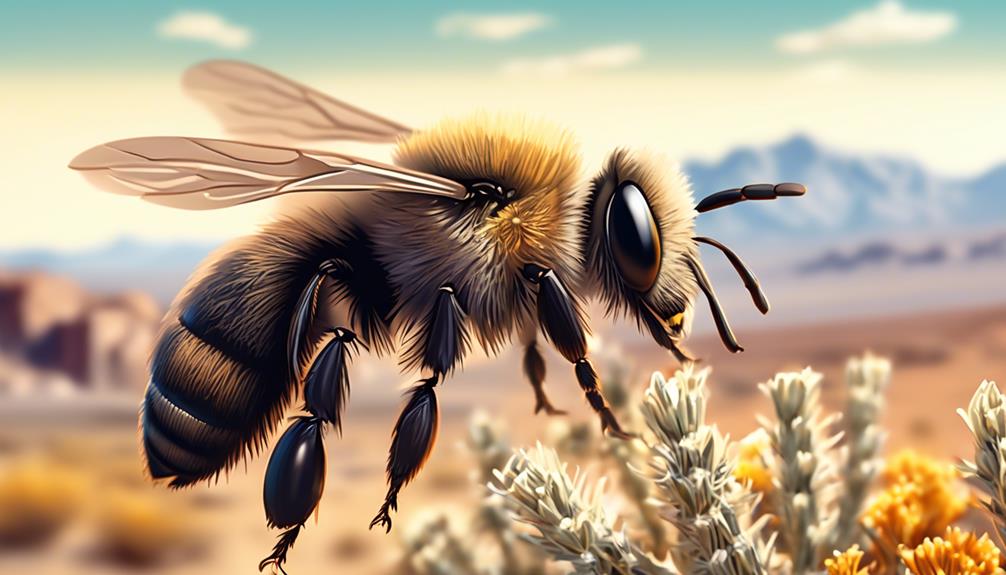
To fully appreciate the role of Mason Bees in Nevada's ecosystem, it's essential to understand their unique biology, behavior, and life cycle.
Unlike honeybees, Mason Bees don't live in colonies. They're solitary creatures, with females creating individual nests in small cavities, lined with a mix of mud and nectar, hence the moniker 'Mason.'
You'll find their lifecycle fascinating. It begins in spring, when males emerge first from their winter cocoons, followed by females. After mating, males die off, while females begin the arduous task of nesting and laying eggs. Each nest comprises multiple cells, each housing an egg and a pollen-nectar mixture for the larva to feed on.
What sets Mason Bees apart is their role as prolific pollinators. They're more efficient than honeybees, due to their hairy bodies that catch pollen easily. A single Mason Bee can pollinate as much as a hundred honeybees. This makes them vital for Nevada's flora, especially for fruit trees and wildflowers.
Recognizing their importance, you'll understand why it's crucial to protect their habitats and encourage their proliferation.
Mason Bees in the United States
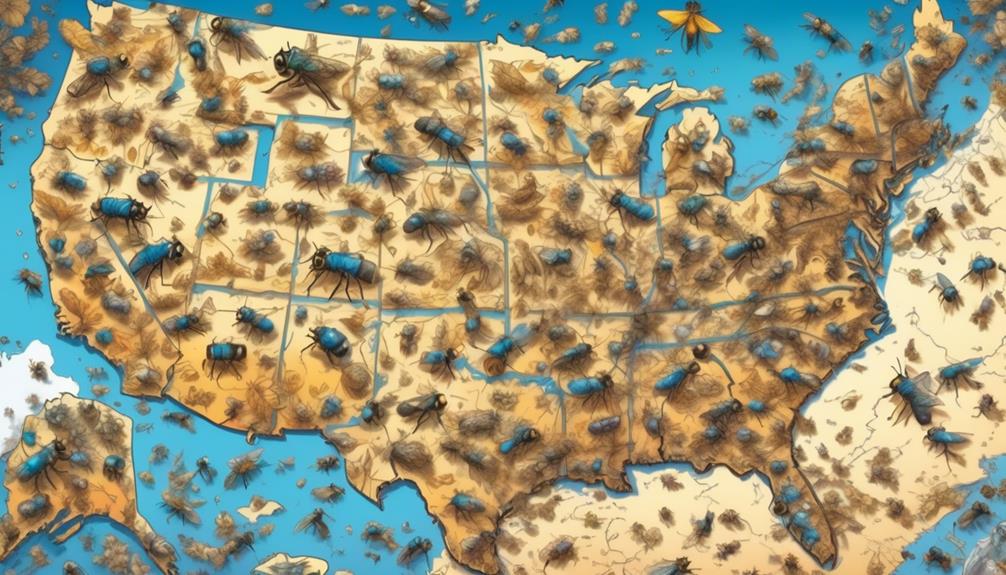
Across the United States, you'll find Mason Bees playing a critical role in ecosystems, their diligent pollination efforts supporting diverse vegetation and wildlife. It's important to note that these bees are solitary creatures, unlike their honeybee counterparts, and they're found in a variety of environments, including forests, meadows, and even urban gardens.
Their adaptability is impressive. They're capable of thriving in both coastal and desert areas, demonstrating their versatility and hardiness. Furthermore, their pollination efficiency surpasses that of honeybees, making them invaluable for sustaining biodiversity.
In the U.S., you'll encounter several species of Mason Bees. There's the blue orchard bee, renowned for its metallic sheen and ability to pollinate fruit trees efficiently. The horn-faced bee, another species, is known for its distinctive facial projections and its preference for nesting in wooden tunnels.
These bees aren't aggressive and rarely sting, making them ideal inhabitants in both urban and rural environments. They're also low maintenance, requiring only a safe nesting site and a nearby pollen source.
Understanding Mason Bees' behavior and ecology can greatly benefit conservation efforts. By promoting their survival, we're also bolstering our ecosystems' health and resilience.
Nevada's Bee Population

Diving into Nevada's bee population, you'll find a diverse array of species, with Mason Bees playing a significant role in maintaining local ecosystems. These bees, of the genus Osmia, are known for their solitary nature and exceptional pollinating abilities. They're an integral component of the state's biodiversity, contributing to the pollination of numerous native plant species.
In Nevada, you'll encounter over a thousand species of bees, each with unique characteristics and roles within the ecosystem. Interestingly, Mason Bees are among the most efficient pollinators. They're capable of pollinating a larger number of flowers in a single day compared to other species. This is due to their unique foraging behavior, where they brush against the flower's anther and stigma, enhancing pollen transfer.
However, like many bee species, Mason Bees face threats from habitat loss and the use of pesticides. It's crucial to note that their decline could have detrimental effects on Nevada's ecosystems, impacting plant reproduction and the entire food chain. Therefore, understanding and conserving Nevada's bee population, particularly Mason Bees, is an essential task for preserving the state's biodiversity.
Mason Bees: Nevada's Unsung Heroes

Shifting our focus to Mason Bees, these remarkable creatures are truly Nevada's unsung heroes, playing a pivotal role in the state's ecosystem that's often underappreciated. They're not only integral to the pollination of native plants, but they also contribute to the agricultural community by pollinating crops.
Unlike honeybees, Mason bees are solitary, meaning each female is fertile and makes her own nest. They're named for their habit of using mud or other 'masonry' products in constructing their nests, which are often in hollow reeds or holes in wood made by other insects.
An interesting aspect of these bees is their efficiency. You've probably heard of the phrase 'busy as a bee', but Mason bees take it to another level. Research shows that it takes only 250-300 female Mason bees to pollinate an acre of apples, a task that would require 15,000-20,000 honeybees.
However, despite their importance, Mason bees face threats from habitat loss and pesticide exposure. We need to recognize their value and work to conserve their populations. So next time you're out in Nevada's wilderness, keep an eye out for these unsung heroes. Your appreciation helps protect them.
Impact on Local Ecosystems
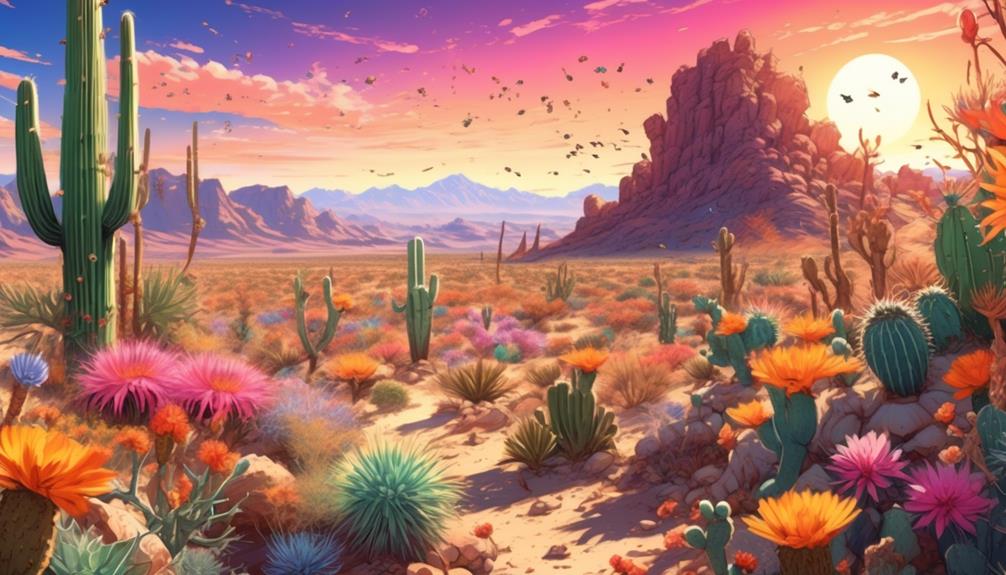
In understanding the impact of Mason bees on Nevada's local ecosystems, it's vital to comprehend their role as prolific pollinators and the ripple effects this has on both biodiversity and agriculture. These tiny creatures, often overlooked, are indeed powerhouses of pollination. They're known to pollinate more efficiently than honeybees, thereby contributing significantly to the local flora's propagation.
Your backyard garden, local farms, and even Nevada's wild landscapes depend heavily on Mason bees' industrious nature. Their pollination leads to increased fruit and vegetable yields, boosting local agriculture. Furthermore, they help maintain the health and diversity of native plant species, playing a crucial role in the survival of Nevada's unique ecosystems.
However, it's worth noting that like any other living organism, Mason bees also have their impacts. They may compete with native bees for resources, potentially disrupting existing ecological balances. But, the benefits they provide, especially in an agricultural context, often outweigh these concerns.
Conclusion
Indeed, you'll find mason bees in Nevada, working quietly behind the scenes. These unsung heroes are essential to Nevada's local ecosystems, helping to pollinate plants and maintain biodiversity.
Despite their small size, their impact is immense and vital.
So, next time you see a mason bee, remember, they aren't just a part of Nevada's bee population, but a key player in keeping our environment healthy and thriving.

